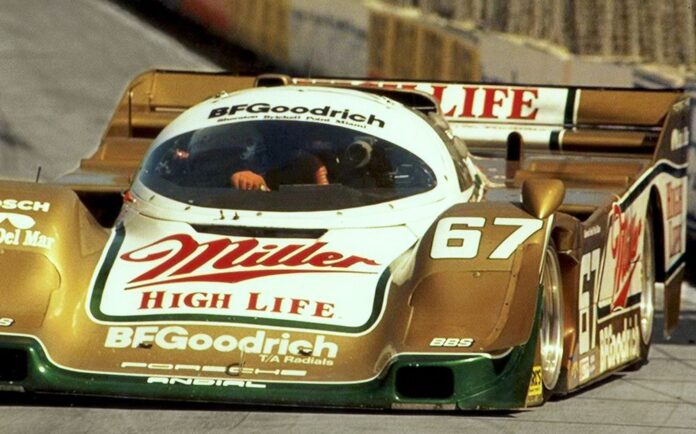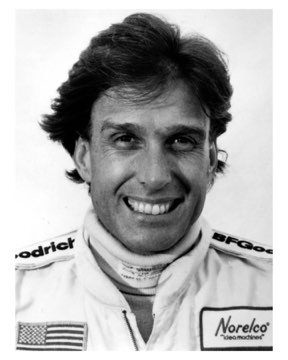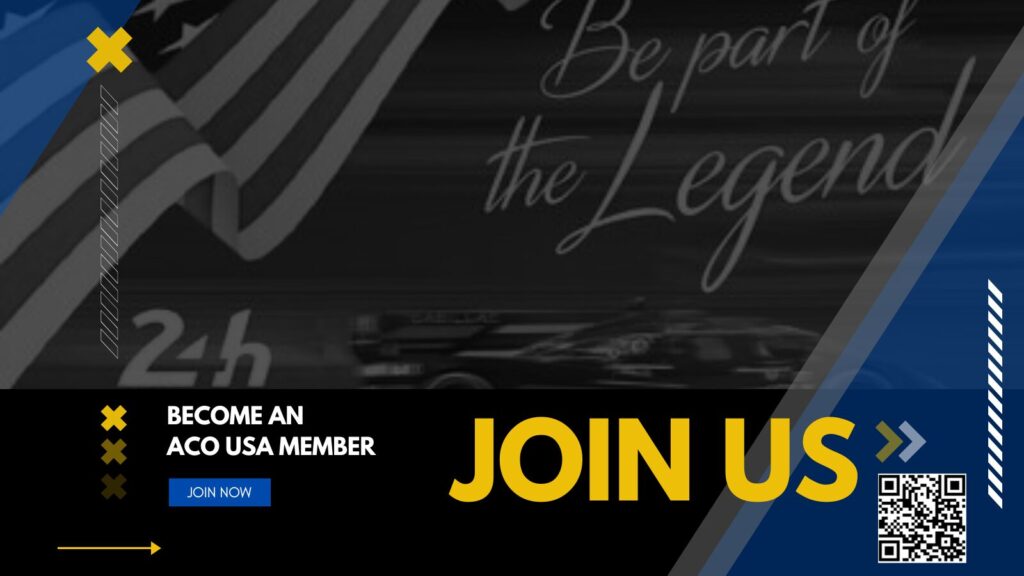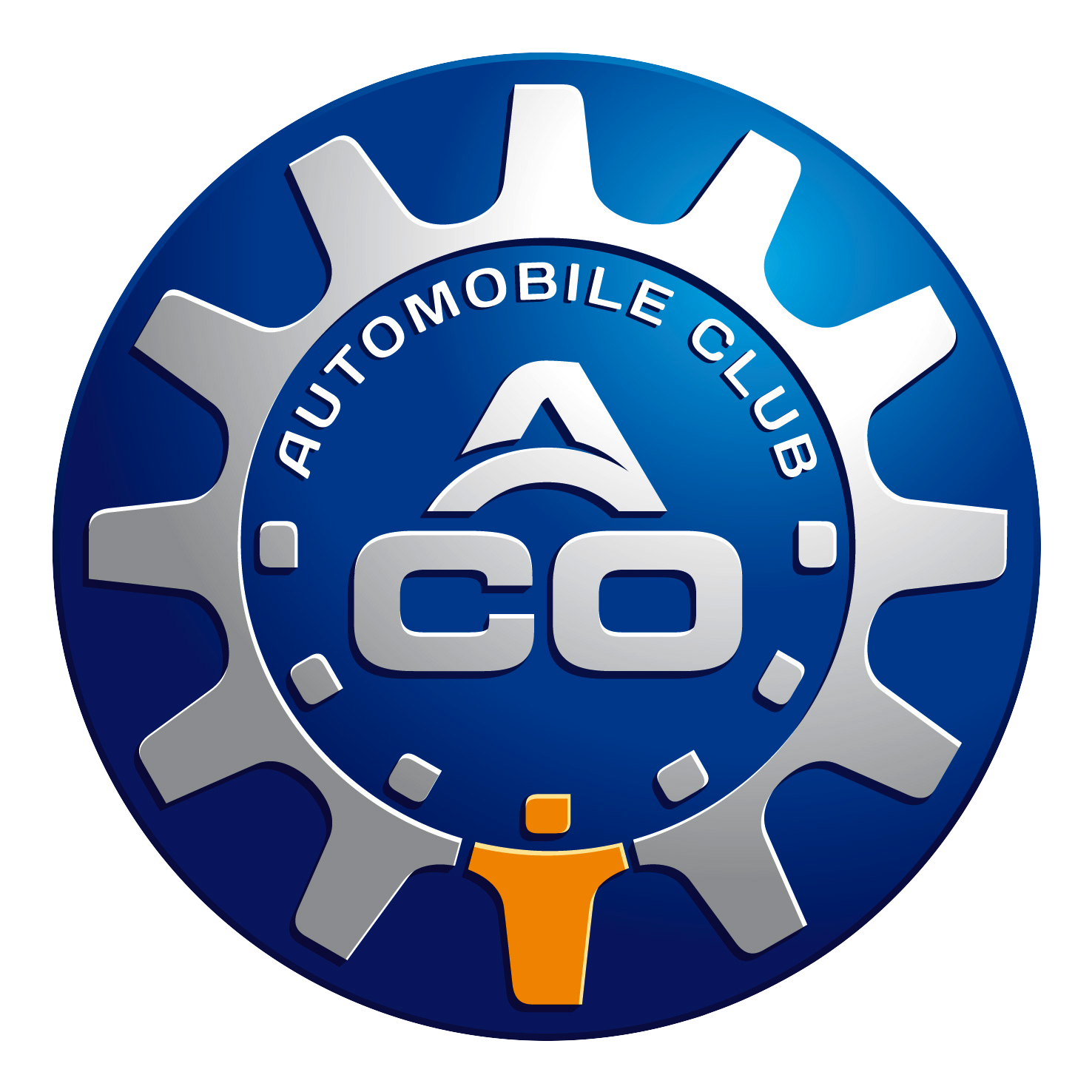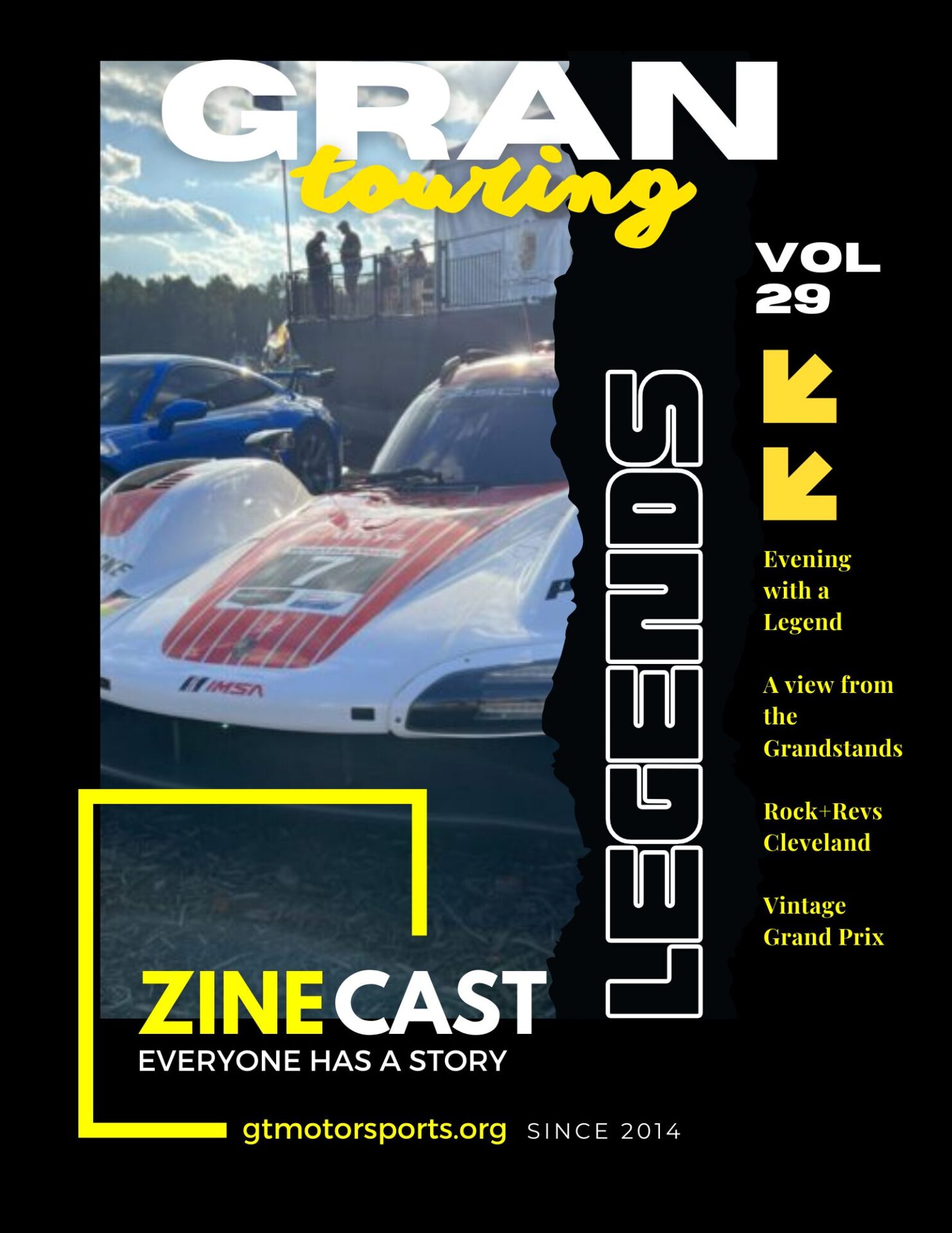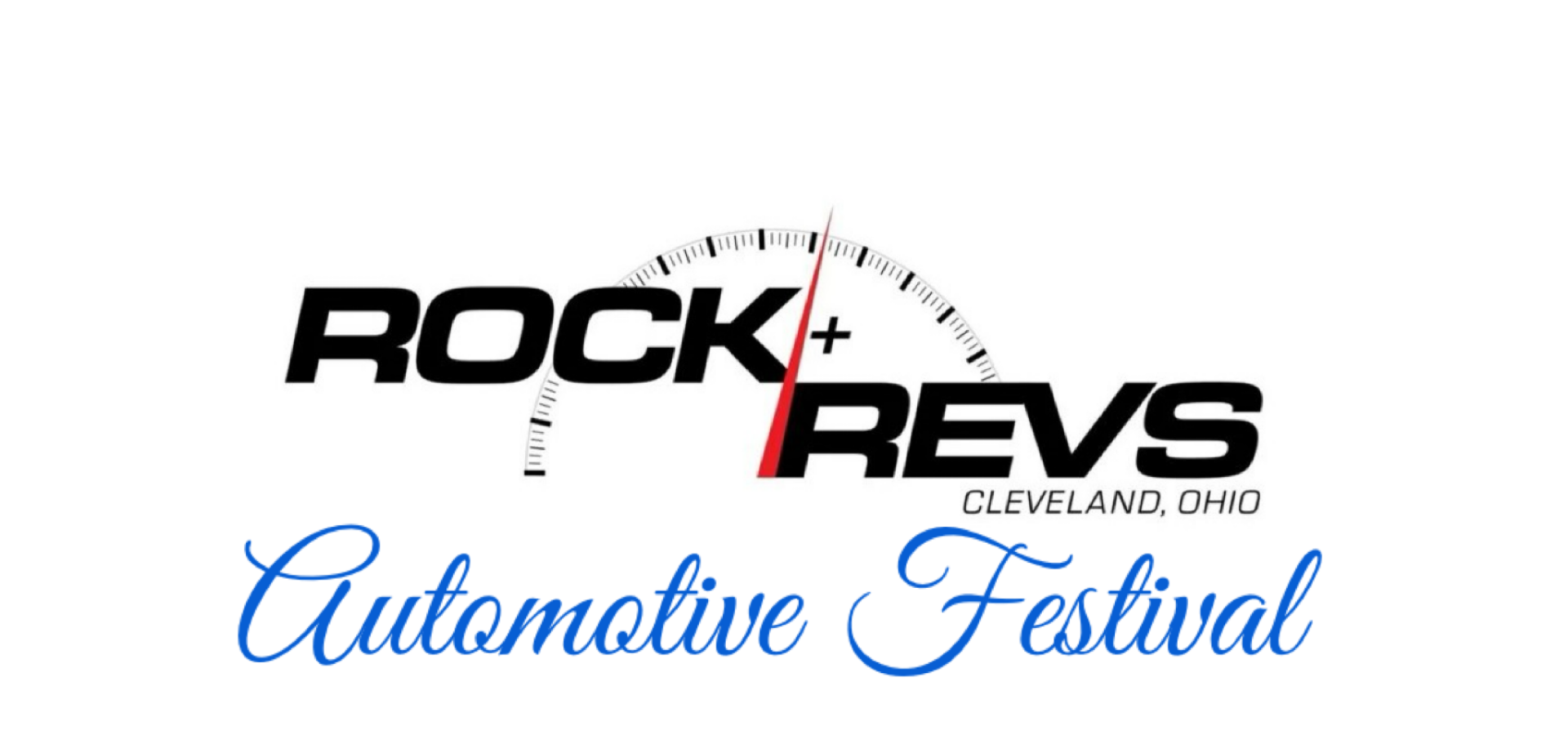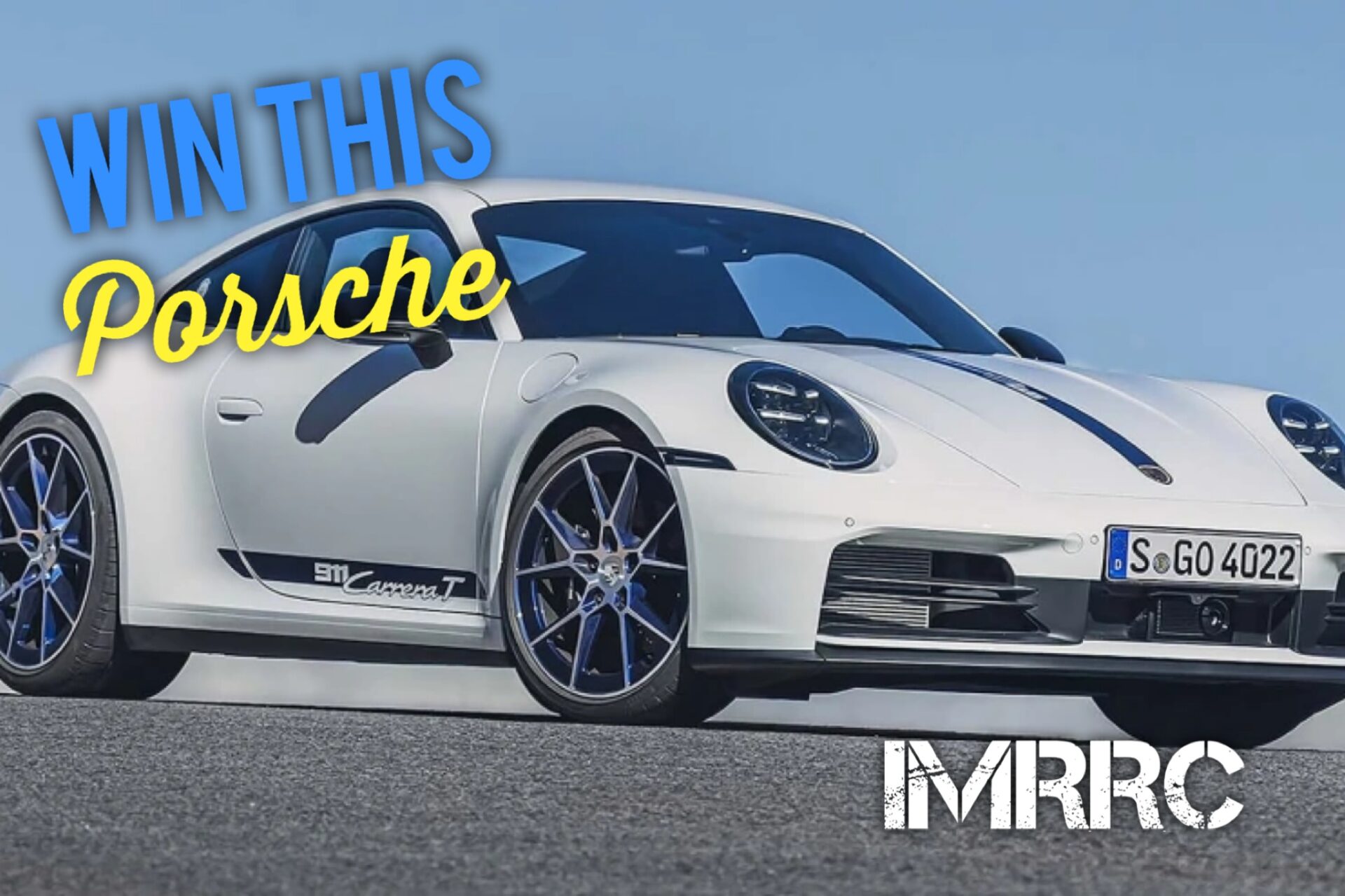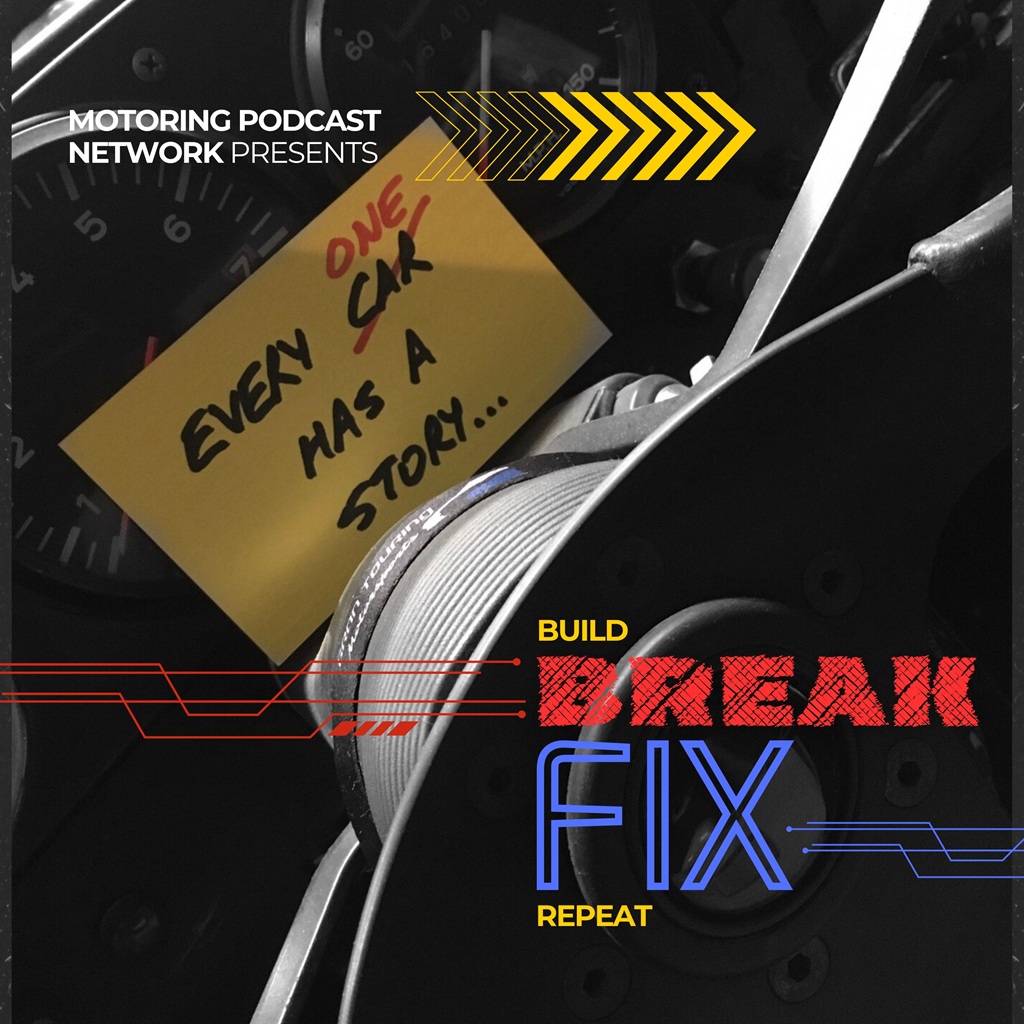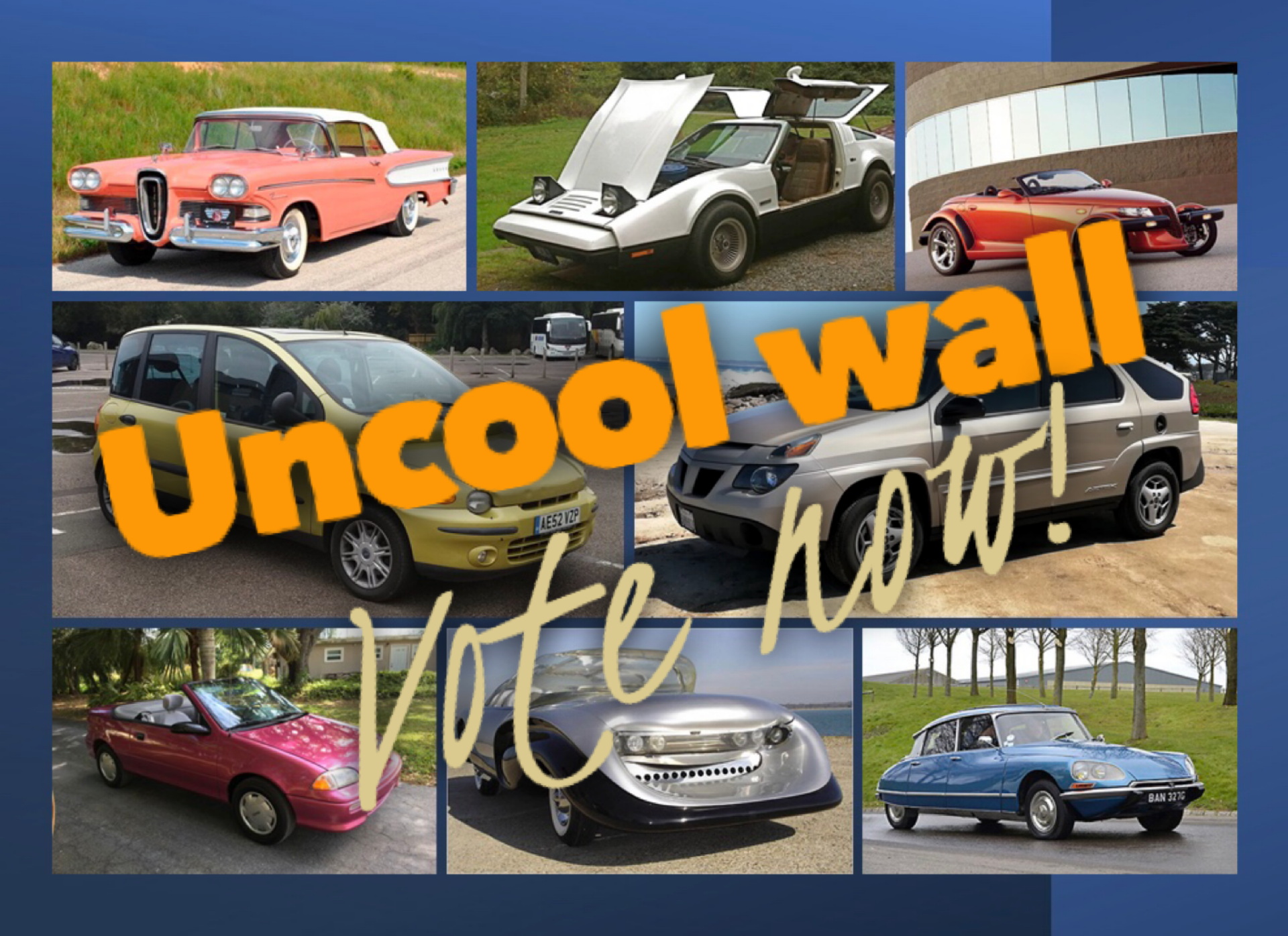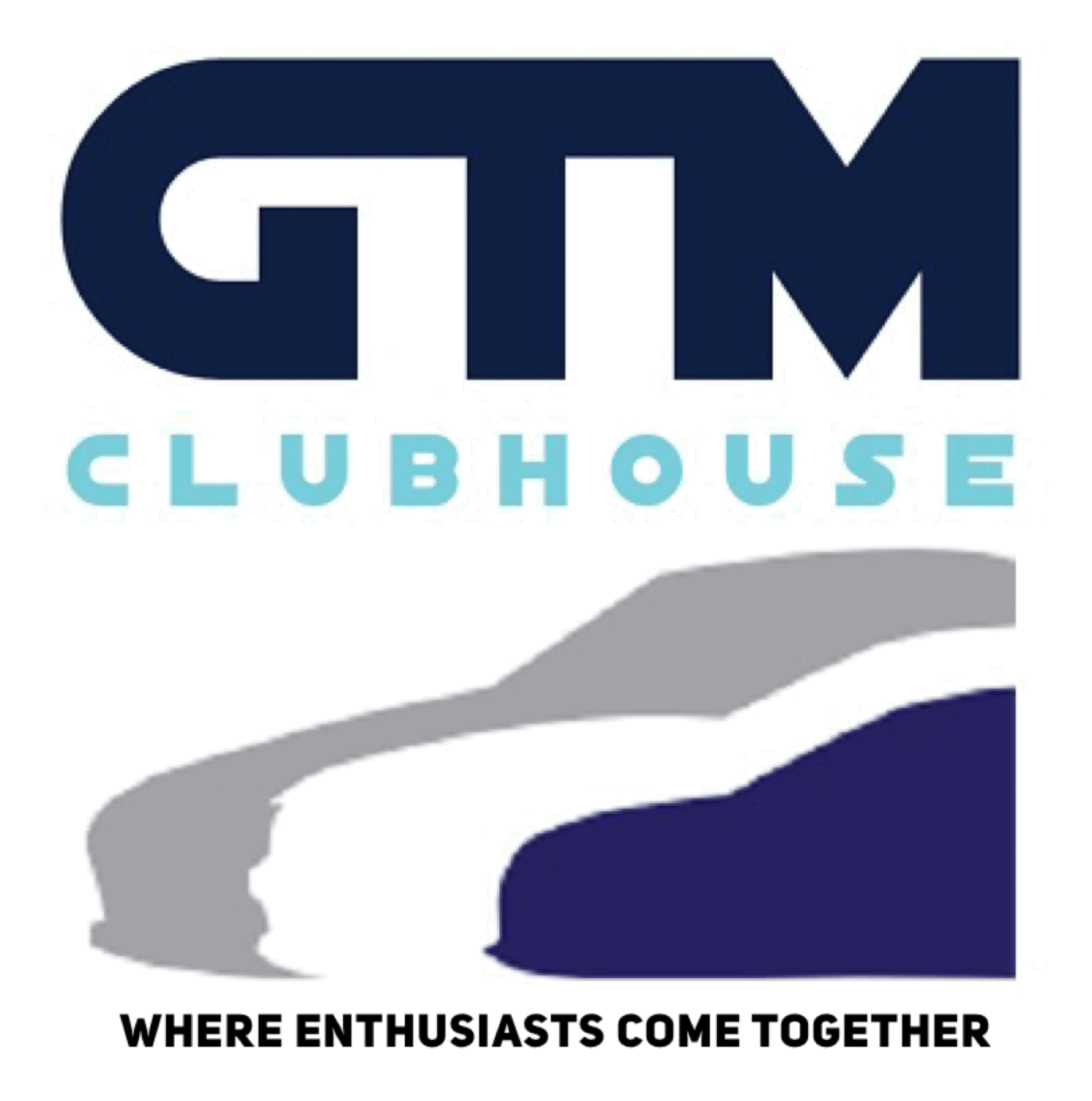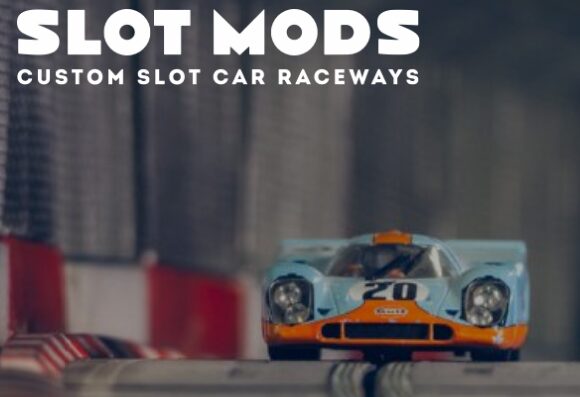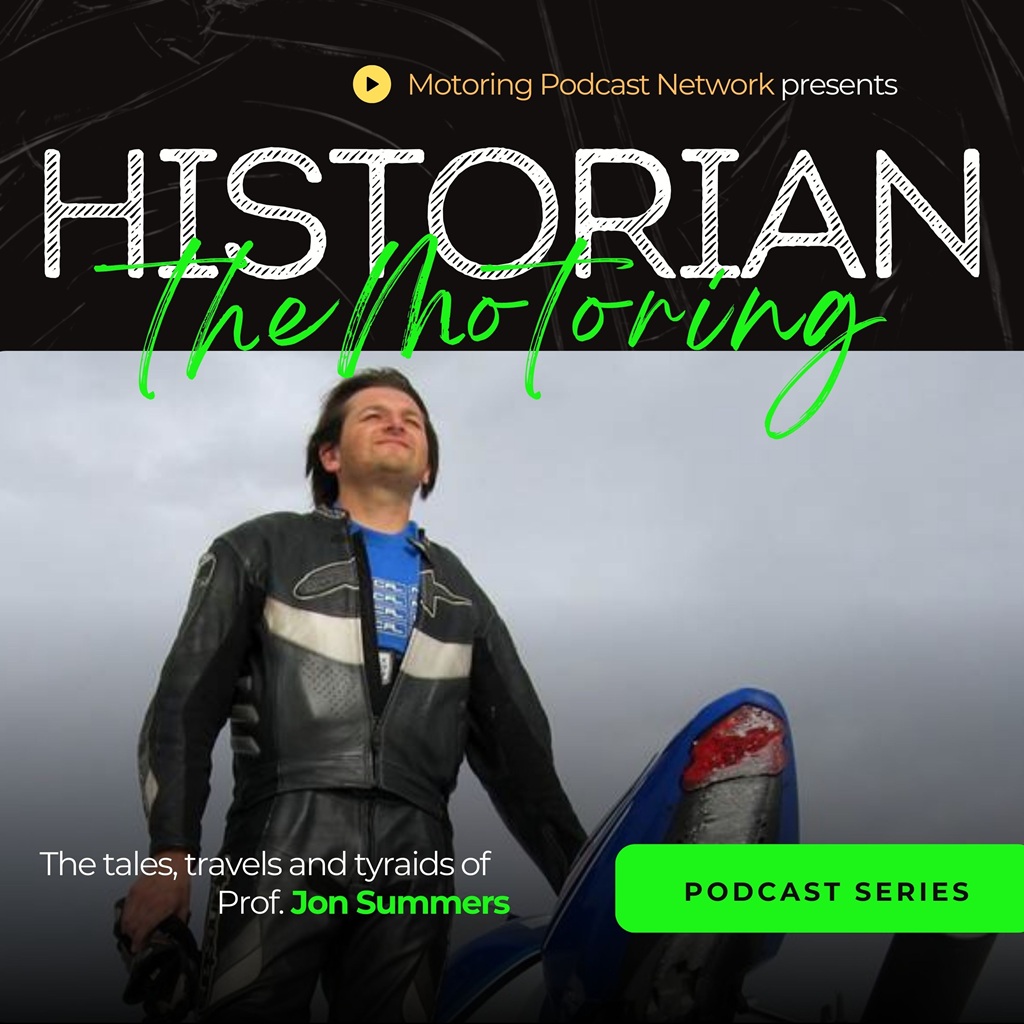In 1978, Jim Busby debut in the Le Mans 24H in a Porsche 935 from Kremer Racing, and finished in 6th position overall. His enduring association with BFGoodrich began with the 1982 Le Mans 24H when his Porsche 924 Carrera GTR won the GT class using BFG’s road-specification tires; and they remain his sponsors and tire suppliers during his 1984 return to Le Mans with a Group C2 Lola-Mazda.
In subsequent seasons he concentrated on managing the team, and perhaps his finest victory came in the 1989 Daytona 24H when John Andretti, Bob Wollek and Derek Bell shared the win in the Miller High Life Porsche 962. Jim sold his team in 1990, and move on to other projects and racing. Busby himself may not admit it, but he is regarded as one of the worlds best Porsche specialists from the 1970s and 80s. Jim now spends his time in Newport Beach, California with his wife.
Tune in everywhere you stream, download or listen!
 |  |  |
- Spotlight
- Notes
- Transcript
- Highlights
- Learn More
Spotlight
Notes
- This Evening With A Legend was hosted by David Spitzer from the ACO USA.
and much, much more!
Transcript
Crew Chief Brad: [00:00:00] Evening with the Legend is a series of presentations exclusive to Legends of the Famous 24 Hours of Le Mans, giving us an opportunity to bring a piece of Le Mans to you. By sharing stories and highlights of the big event, you get a chance to become part of the Legend of Le Mans, with guests from different eras of over 100 years of racing.
Crew Chief Eric: In 1978, Jim Busby debuted at the 24 Hours of Le Mans in a Porsche 935 from Crema Racing and finished in 6th position overall. His enduring association with BFGoodrich began with the 1982 Le Mans 24 Hours when his Porsche 924 Carrera GTR won the GT class using BFG’s road specification tires and they remained his sponsors and tire suppliers during [00:01:00] his 1984 return to Le Mans with a Group C2 Lola Mazda.
In subsequent seasons he concentrated on managing the team and perhaps his finest victory came in the 1989 Daytona 24 Hours when John Andretti, Bob Wallach, and Derrick Bell shared the win in the Miller Hi Life Porsche 962. Jim sold his team in 1990 and moved on to other projects and racing. Busby himself may not admit it but he’s regarded as one of the world’s best Porsche specialists for the 1970s and 80s.
Jim now spends his time in Newport Beach, California with his wife. This Evening with a Legend was hosted by David Spitzer, a member of the ACO USA and who you might recognize as one of the Pitt reporters from the 24 Hours of Le Mans.
David Spitzer: Welcome to everybody and an exciting night and this has been quite a series that David has helped put together already with multiple esteemed guests tonight.
We’re very honored to have Jim Busby. I’ve spoken to Jim several times now, and I know that tonight my job is probably the easiest job in all of motor sports. All I need to do is kind of get him started. Jim. You’ve got such wonderful stories [00:02:00] and I’m looking on the backdrop right now on my screen is David Lowe and some of the artwork that was done by Eric for different cars.
You’ve been involved in so many amazing cars over the years. So many memories for us. For me growing up around Watkins Glen and going to sports car races every year. And so I’m sure I speak for all the fans that are on the line to say, thank you for your time. And let’s start you off with a question just to kind of get you rolling.
Tell us about the first time going to Lamar. Tell us a little bit about how it felt as you got ready to go over there and then arriving there for the first time. It’s such an experience. A lot of our ACO members are dreaming or are going to Lamar. And so tell us about your first time and a little bit about how all that felt.
Jim Busby: To sort of give a little background to how that happened, I always dreamed of Lamont and Lamont to me was the kid’s dream because my uncle was fascinated by sports car racing and in particular the Mille Miglia and Lamont. He had a Cat Allard, which he raced at Pebble Beach down south at Torrey Ponds. I didn’t really have an opportunity to do [00:03:00] that.
I was a hot rod guy. Because I could afford to do that. I worked at a body shop in Pasadena, but I always dreamt of going to Le Mans. And then I started sports car racing, had some success in IMSA right away. I’d raced in Europe before that, which I think gave me a leg up on a lot of guys and began winning races in IMSA right out of the gate.
Well, I, I built a 9 35 conversion of a 9 34 for a felony. Hal Shaw, who he owned the OR house, and Hal said, Hey Jim, would you drive a Daytona with me? And I said, well, sure, but you know, we don’t have a factory 9 35 engine. We’re gonna run your 9 34 engine. But we re bodied the car as we did for Rick when he first went to Seabring.
And it was, it was a mid packer, and with some luck, it could run near the front. So after my second stint, I got outta the car and I was walking across the paddock at Daytona. And up walks Erwin Kramer. And I’d met him through John Fitzpatrick and a couple of guys. And of course their focus was Le Mans, Monza, and the big stuff.
And he walked right up to me and he [00:04:00] said, Jim, would you like to drive our car at Le Mans? Are you kidding me? I said, Tim, do I leave tonight? Do you want me to not stay? And he said, we’ve watched you. We want you to drive our cars at Le Mans. And I said, well, okay, but I’m going to level with you. I raced really hard and I want a chance to win.
You know, Lamar is a very dangerous race and part of the mystique of Lamar, whether we like it or not, is the fact that it’s very high speed and very dangerous. And that myth and that truth Have carried Le Mans as far as it’s gotten today, and it remains high speed and dangerous today. Somebody said, well, they put in the chicanes.
Well, we raced non chicane. Rick Newp and I did that. We get it. It’s still a high speed dangerous place, and that’s half of the mystique of the race, and it needs to stay that way. People need to understand that this is the real deal. This is not your little backyard game, and that’s what people are so fascinated with.
So I said, well, who would I drive with and they shall remain [00:05:00] nameless. And they told me, and I said, look, I’m so flattered that you’ve asked me to come in and I would like very much to do that, but I want a chance to win. And I don’t think that’s going to happen. And he said, well, what would you do? And I said, well, what if we could find a couple of guys in America that I think are really good, that can give us a chance and we’re racing in the group five category, which is harder than the IMSA category, but different size fuel tank, different length pit stops, it’s a tough race to win.
And so I thought about that and I, and I walked over to Fred New. Rick’s dad. And I said, Fred, do you think Rick would like to go to Le Mans? Of course, Rick had never been to anything like that. He was at Daytona. I think I saw a Carrera with maybe Howard Meister or somebody like that. Good team. And, and I’d seen him race.
And best part was, is he was quick enough as a beginner. But he brought them back alive. The cars came back alive. And if you think you can win it in the mall without bringing them back alive, you’re dead wrong, [00:06:00] especially
David Spitzer: in that era, you know, I mean, nowadays may be a little bit more tolerant, but certainly in that area, the danger and the keep the gearbox going, you know, keep the darn thing on the track.
Jim Busby: So Fred looked at me and he said, well, if we could put that together, that would be wonderful. I said, we’ve got to replace the money that these other drivers are bringing with money that we can find, because that’s going to supply it. And frankly, I’m a paid driver and we got to find money to run our guys.
And so he said, what about Chris Cord? And I said, Chris Cord is a really quick guy. I’ve raced him in both Trans Am and in IMSA and his moms, and he’s very quick. Chris Cord was that guy that you didn’t expect him to be. And then you looked in your mirror and there he is. Stuck up your tailpipe. So you got to press on a little bit.
So I thought Chris is a real winner. He’s mature. He’s quick. He’s good. So I called the Kramer brothers and said, what about these guys? If we can round up some money. Well, Chris found Amdahl Computers, which is a film about Le Mans that was done, [00:07:00] narrated by Bruce Meyer of the Peterson Museum. You’ll see that we were sponsored by Amdahl Computers.
We weren’t buy a ride guys. We got the sponsorship. So I call it Kramer Brothers. And I said, we got it. We’ve got 20 grand from Amdahl Computers. Chris Kord’s the driver. They say, wow, he’s great. We love him. And we’ve got Rick Newhart. It went silent on the other end of the line. And then Irwin or Manfred Kramer.
Their English was a little questionable and probably designed to be so because Amdahl Computers. They don’t want to be too committal, but anyway, here was the question. Has Rick Newt ever driven a turbo? My answer was, has Rick Newt ever driven a turbo? Like it was the most incredulous thing I’ve ever heard in my life.
Preposterous question. Yeah. And they never, ever said, well, what do you mean by that? They said, okay. So we get there and one of my first memories when we got to Le Mans, we had some car trouble with some vibrations. We sent Rick out for a couple of laps. After he did the most flat chat and high gear, man, he had [00:08:00] eyes the size of sauce.
When he arrived back in the pit lane, they’re going to try something. They put some, something over the air and let’s to try to stop this vibration. Put me back in the car and I took off again and didn’t fix it. And so on and so forth. Then we’d put Ricky in and then we’d. You know, the moment, the practice is really great because it starts at four in the afternoon and then it morphs into darkness, but darkness is very late.
They’re 10 30, something like that, depending a little bit in the day and you run a lot at night and it’s wonderful. And so Rick took well to that. And after that, it was just no problem. He was in like a little pro and he was a kid at the time for Chris recently passed away, but he was a vet. At the time, a veteran at the time, and I was not a veteran of Lamar.
That’s for sure. But I’d done some long distance racing.
David Spitzer: Was it everything you thought it was
Jim Busby: going to be in terms of, uh, it was more. And I think the nighttime racing on the most on straight and rich Quebec, this up was the most incredible thing I’ve ever done, and it was, More difficult than I ever imagined.
I’d run [00:09:00] Daytona, gosh, I can’t even tell you how many times the 24 hour and been on the podium and finished second, third, fourth, second, so on. Never won that one myself as a driver, but we did win as a team, but it was everything that I imagined and then some much more dangerous, much more risky. And it was everything that I had hoped it would be.
Remember that when people see what Lamar was in the day and they saw Steve McQueen’s movie and the huge accidents, that’s the real deal. Those cars do flip over backwards. They do hit things at very high speeds. And while the terrible 1955 Mercedes accident will always be tagged to Lamar, Lamar will always own that accident.
People still show it. Why? Because it’s part of the scenery at Lamont and it’s huge and it had an enormous impact on the popularity of racing, tragically in both directions. And why do people go to Lamont to see the danger and people lose their lives? No. [00:10:00] they go to see them escape doing that. They want to see that they’re right on the ragged edge of being in that awful fire, but not in it.
Almost. And that’s what they want to see. And as soon as there’s too much, I don’t want to say safety, but too much emphasis on not making it risky, it loses its mystique. I’m sorry. That’s just the way it is. And it will always be the race. It’s not a race. It’s not a great distance race. It’s the race always will be.
And you can win the farm into one world championship. But boy, when you get done with that, you better get a ride at Lamont. That’s you notice they’re all doing that because that’s the one they left out. And it’s still the most exciting, the most dangerous and the biggest thrill to win. It’s incredible.
Incredible. And the helicopter’s going over the top of the pit lane with your name on it. That doesn’t happen at IMSA in mid Ohio, but it’s a hell of a hard race in mid Ohio, but the reality is that it has a mystique in and of itself. [00:11:00] It’s not the same as anything else. The Daytona 24 hour is a wonderful 24 hour race, but it’s not Le Mans.
It never will be. And it’s still just as tough to win in some ways. It will never have the mystique and the thrill that not only the drivers get, but the spectators get. Spectators are on their toes all the time. You know, in the middle of the night, you walk out into the pit lane and you stare across. And when the race started, there was 150, 000 people in that grandstand.
Standing on
David Spitzer: those concrete little steps that are at a weird
Jim Busby: angle. Yep. And then you come out at 1130 or 12 o’clock at night. And then you come out at three in the morning and they’re empty. There’s not a single person in the grandstands. What do they do? Well, whatever French people go off into the forest and do, and then come back and they start trickling in.
And by morning time, there isn’t an empty seat anywhere. I had a really fun experience in my first daylight session after we’d run all night. And Chris had witnessed a horrible accident on the Moulson street, and we thought it had [00:12:00] killed Bob Gerritsen. But. I thought it was Brian Redmond because I’d been following Brian and then I lost track of him, I think I got around him or something.
Anyway, I, he wasn’t, we weren’t together anymore. And then I came around and I saw this wadded up red 935 in the middle of the street and they were cleaning it up after Chris. Had witnessed the accident. It was turbos and engines flying through the air and everything jumped. The Kramer brothers had the foresight to say, don’t pit for new tires.
We were running over debris. Chris called in and said, you want me to come in and get new tires? This is a really bad accident. It’s going to take a while to clean up. They said, no, don’t come in. Why? Because you’ll put new tires on the car and go out and puncture them. And then we’ll put another set on.
Plus you don’t pit because when I asked Phil Hill, when he came in right before the start, after my first session, before the start of the second section, which would have been Chris, I said, Phil, give me an idea how you win this thing. And all he said was after his decades of racing there and five wins or whatever his overall win record was, he looked at me and he said, [00:13:00] stay out of the pits.
So I said, great wisdom entailed. And all I said was stay out of the pits and the pits is Rick will recall. We ended up also winning, not just the group five category. We won what’s called the Francis Afrique trophy. You ask, what is that? Well, I don’t know, to tell you the truth, they give you so many trophies.
They all take that too. And we’ve got them all lined up here. When was the last time you got over to Lamar? Have you been
David Spitzer: over recently?
Jim Busby: No, I went to race and never went back for any other reason. I went three
David Spitzer: times and we went three times. Tell us a little bit about the lodging and the experience. Just the whole ambiance, you know, seeing people at dinner and the whole experience of being in France was that extra special beyond the racetrack.
It was
Jim Busby: equally important because I’d never done it and I went with Chris and his wife. Rick, his brother and Rick’s dad, and we got a little, I’m going to murder this town, but I think it’s good. It was called Allen song. Your pronunciation is excellent. It’s on the signs right around the mall. That’s right.
Yep. So Rick’s [00:14:00] dad rounds up this hotel in Allen song and a cool little restaurant. So that’s good enough for me. And we’re staying there and we commute back and forth daily. So here we are sitting in this tiny little town. It’s not known for racing. It’s known for making beautiful lace. And a very sophisticated population.
And I’m really thinking this is cool. And yet we’re a few miles away from the circuit, which is remarkable in itself. But mostly when I get there, I find out that the technical inspection is in downtown Lamont. So somebody says to me, who’s going to drive the car on the racetrack from the tech inspection?
I said, I’ll do it. I’m your guy. And then somebody says, no, they quit that last year or something. So they don’t do that anymore, but they did in the day. And I imagine myself going down some Boulevard and breathing nine 35 headed for the racetrack down the Mulsanne highway, which then leads you in the Indianapolis corner, all incredible legendary stuff.
That’s going to happen to me as a young man, [00:15:00] none of it happened. They trailered the car over there and we got going. And that was that.
David Spitzer: But it was by the plaster Jacobon with the big, beautiful Gothic church and
Jim Busby: everything right there in the center. Absolutely. Yeah. Every tech inspection I ever went through.
All you can think of is when am I going to get out of here? Do I really need to be here? Please look at my helmet and tell me it’s okay. And let me get out of here. You could have stayed there for two days and enjoyed the ambiance and the photograph. The fans were so excited to be there and they’re locals.
You’d think that if you lived in Ramon that you would ignore the race after a while. It would become blasé. I grew up in Pasadena and I eventually ignored the Rose Parade, which was two blocks from my house. Park cars and make money. No, if you live in Lamar, you go to tech inspection, the entire city turns up for that.
And so you get to meet people that are thoroughly excited to be there and want to meet you and so forth. So once again, the experience of Lamar, it isn’t just the challenge or the danger, it’s Lamar itself. It’s an [00:16:00] unusual city full of wonderful people. And the idea that French people can be difficult to get along with is something that’s generated here.
I’m sure because they weren’t, and they were wonderful to us and treated us like princes and princesses the entire time we were there, my wife and I went a couple of years later, there’s another. A movie that was done by BF Goodrich for the Porsche clubs, which you can also find next to the Le Mans movie.
David Spitzer: Let’s talk about BFG. So you mentioned that you started out on street tires and then you kind of put together a deal that allowed you to take them to Le Mans. Is that right? Can you talk us through a little bit of that journey?
Jim Busby: Well, really what happened. It was sort of the reverse of that. What happened was as a friend of mine from sports car racing back in the day, when I was racing in Europe and I’d won a race at Le Châtre in central France, which had been won by Jack Brabham and some big shots.
The only reason I won is I was a kid from America. I didn’t come in in the rain. I didn’t know about rain tires. I’d never raced in the rain in my life. So I just stayed out, slid through the grass. And they [00:17:00] finally called off the race with a couple of laps to go because it was too dangerous. And I won it because everybody else stopped for rain tires and I stayed out.
So I’d gotten a reputation for being this crazy American guy, which wasn’t intentional, didn’t occur to me that I’d want to stop. And I didn’t, I had gotten to know Duncan Nearpatch, who at the time was running the FIA and had run BMW when I drove for BMW factory, he hired me, I sadly replaced. Ronnie Peterson at BMW after he died, and Jochen Nierkash was my boss.
He came up to me at a race in America, and he said, you know, we’re happy with what you’re doing here in America, but do you think BFGoodrich would be interested in ever going to Le Mans? And I said, well, I don’t know if they would, but I sure would. He said, well, we’re going to start the C2 category, which is going to be very competitive.
Do you think they’d be interested in participating in that? So I went to Gary Pace, who was running in the BFGooders program at the time. And I said, Gary, I know you’ve mentioned that you like the idea of Le Mans and we’d [00:18:00] already been in the 924, which was basically a factory effort of a Brumos car, and we had done it on street tires, which was outrageous, but BFGooders had had some experience at doing that by shaving their tires down almost to slicks.
So they’re pretty sketchy in the beginning and they never get to be a race tire, but they get managed. And we did it in the 924 turbo, which was a factory effort, which has a whole bunch of fun Le Mans stories about Porsche rebuilding the engine in the rain and so on and so forth. And we went. So when Nearpatch suggests that we go again on street tires, VF Goodyear goes for it.
I go to Japan and meet with the The people from Mazda, because they’re going to supply the engines and we know that they’re good 24 hour engines and I take a look at their stuff. And when I, I said to one of the engineers, I said, well, maybe you want to have a human transmission, not a synchromesh transmission.
Maybe you want to have a little different chassis than what you’ve been running there for a couple of years. You haven’t had the success that you like. If you send me to Lola, we [00:19:00] can get a really good chassis built, use your running gear and so on and so forth. We’ll be good to go. So the guy looks at me and the greatest honor in Japan is when you’re getting ready to go to the ma, you get to take a bath with the president of the company.
So naturally I’m thinking, well, maybe that’s not my first idea. I guess I’ll do that. So that night I taught the president of Toyo Kogo, which is Mazda in Hiroshima. I talk them into going to Le Mans with a Lola chassis, a Hewlin gearbox, and their power plants with BF Goodrich tires, which BF Goodrich is convinced are going to be street tires.
I’m not, but that’s a fight for another day. What ends up happening is I fly backwards that night around the world. To London, meet with Eric Bradley, who I’d driven for in the sports car championship in Europe, of Lola fame, could you build us a car that would do something unique and win it in Le Mans? He said, sure.
Is that’s for your passion’s new C2. I said, it is. He said, okay. And they had their Le Mans car there, which was a [00:20:00] 610. I looked at it and I said, well, that’s a big car for a small engine in the C2. And he said, well, why don’t we make it smaller? Isn’t your sponsor a tire company? And I said, of course it is.
He said, good. We need 13 inch tires, just like on the front of a Formula One car. And we’ll squeeze that body down to nothing. And that was that really flat body that looked like it got squashed. That’s exactly right. And it came out really pretty. And I’ve got pictures of it all around here. Rick and I, our first race in Europe was Monza.
Rick and I won it
David Spitzer: in that C2 car
Jim Busby: and the C2 car. Then we went to Lamont and one there. The reason was that car. Wouldn’t accelerate like a rocket, but it had high speed because it had no wind resistance. If you look at the pictures of the actual Lamar car, as opposed to the one we ran here, wing is down behind the car.
It’s a trimming device. It’s not a real wing and there’s no wind resistance. So by doing that, and then ultimately through tire testing, convincing BF Goodyear that they need to make slick tires [00:21:00] with real radial street construction, which was more challenging than you can imagine, because I can remember the first test I did, it shook the fillings out of my teeth because they were trying to use a street construction that has all sorts of lifelong tendencies of a street tire, but with the traction of a racing tire, but they did it.
And we won, I mean, we didn’t screw around with that car. We led races and we won to win at Monza on our way to high
David Spitzer: speed. Also, right.
Jim Busby: There was only one thing that they liked better than looking at our cars and that was looking at our 18 wheeler. They’d never seen one. There was a hundred thousand people watching the race and 40, 000 of them.
Every time we’d pull in and our 18 wheeler would come and stand around the truck and wait for it to be unloaded. That was the whole story of the race was the BF Goodrich 18 wheel truck. And they loved it. And that thing got stuck in some old lady’s house, went around a car and got wedged into a wall and the president of BF Goodrich had to romance her, write a check for a man to come and remove her fence, get [00:22:00] our 18 wheeler out of this little town and put the fence back up and write a check for the whole thing.
David Spitzer: Any of our fans that have been to Le Mans or been to France know exactly what he’s talking about. You get to these. Old medieval towns and you’re lucky it wasn’t two buildings that just couldn’t be taken down. But I did a lot of work for Cadillac back in the day. And I mean, we’d get over there with a Cadillac street car and there were places you just couldn’t go.
I’m imagining with an 18 wheeler. Now, one of our fans asked a very interesting question. The question related to the 1986 event. Apparently there’s a rumor out there in the world that you were racing with BF Goodrich sponsorship on a car that actually did not have BF Goodrich tires. Is there any truth
Jim Busby: to that?
You’re smiling already. First of all, every story takes on its own truth, and that’s not what happened. And it wasn’t 1986, it was 1982. Porsche wanted to win both categories, which they were pretty sure they were going to win the overall with X and Bell in the 956. Yeah, 962 [00:23:00] shorter wheelbase, 962 with a four valve twin turbo engine, whereas in America, we’re in the 62 longer wheelbase with an air cooled motor, single turbo, which ultimately we managed to hop up here with Ed Pink and Alvin Springer.
And I’ll to make more horsepower than the factory four cam motor, because we had 3. 2 liter motors. They have 2. 4. I know Alvin very well. He’s been a part of racing for many,
David Spitzer: many years.
Jim Busby: Alvin and I started to get, what happened was this Porsche was convinced that in order to race, you must qualify. BF Goodrich agreed to allow us to qualify on Dunlop tires without any ID on them, because the truth is, is that there’s a limit.
You have to cut within a certain limit to make the show. You don’t just go because you’re in a class. My drivers, two of the guys that I raced with. Francois Mignot, who was a great guy, great driver. He didn’t get enough in the time in the car and they didn’t let him race. And he was French, which is [00:24:00] just unheard of.
They’d make some new rule or something and change that, but they didn’t. And so they stick to their rules and God bless them. And the poor guy was a great driver. He just never got enough time in the car and they didn’t let him start. So doc Bundy had to do that race with me. And there was just two of us and we did the whole race, which I was used to.
Cause at the Daytona 24, we did two driver races leading up to Nowadays, when there’s six drivers or whatever it is, I never quite understood that why there’s more drivers on the podium than mechanics, it’s how they get it
David Spitzer: paid for Jim. Come on. You know, the answer to that. I
Jim Busby: didn’t want to bring that up, but that’s how it is,
David Spitzer: by the way.
I got to dial back to the fact that you guys came up with 20 grand and that was enough to go to Lamar. That blows my mind. 20 grand. Wouldn’t even pay the fuel bill at Lamar. There’s a little
Jim Busby: sidebar that the Kramer brothers will go on any. Right. They went every year and they were a top lot flight team.
They won overall the next year because they didn’t have the group six class. And I hooked them up with the guys who raced in that, the Whittington brothers, basically the same car, which is now owned by Bruce Meyer, who’s the founding [00:25:00] director of Peterson museum owns that car. And I hooked the Whittington brothers up with the Kramer brothers.
And they won again, both in group five, we were five previous year. And they won overall because there was no group six anymore. So anyway, BFGoodrich agreed to do that. We did qualify. And that car was so fast down the street. I remember in qualifying that little 924 with this hot rod motor in it. I could catch a toll off Derek Bell in the 956 and he wouldn’t get away from me.
As soon as we went over the kink, down through the kink and over the hump and get on the brakes, he’d disappear. Right. We didn’t have the downforce or the braking capability in our car waiting. Anyway, the factory set it up. So I got a tow with the 924 from the 956 in qualifying and we did well. I would catch a tow from him occasionally during the race.
And I, Doc did too. And it was Doc Bundy and I, Doc had never been to Le Mans. I’d never been, I’d been to Le Mans in 78, but I’d never been in a stock 924. Well, guess what? We had a lot of engine trouble leading [00:26:00] up to the start of the race and poor Francois didn’t get into the car and Doc and I are now starting this race alone.
So the night before the race, we find out that the reason the engine isn’t running well is something is wrong and Porsche decides to rebuild the engine. Now this will tell you why, if I ever go anywhere to a serious race, go with Porsche, because you got a real good chance of doing well, they always come back a lot.
I say, what are we going to do guys? And they said, we’ve got it figured out. So two guys show up. You ever seen a Volkswagen? Flatbed truck where the full sides fold down. It’s a dual cab, like a Volkswagen bus, but with folding down rear sides into a flatbed truck. And they pull one of those things into the paddock.
It’s raining. Remember this isn’t the glorious pits that you have at Le Mans. Now, these are concrete bunkers with steel pipes full of gasoline running over the top. So I say, well, what are you going to do with that thing? They pull an engine stand off, stick it in this hole in the back of this truck. And pull the 924 [00:27:00] motor out of the car, which is in trouble and rebuild it in the rain to portion mechanics in red jumpsuits, like you’d see in the factory water from the rain, dripping off their noses onto parts.
And they build the engine that we will run in the 24 hours in the rain outside on the back of a truck. And what had happened is one of the gears on the crankshaft was incorrectly indexed. Oh, they took a flat file for lack of a better term was a flat bastard file, a new groove in it and put the gear on the other way off.
We went to the new motor and we ran 24 hours with that motor flat chat the entire time and missed a lick, except it pushed out a head gasket with about 3 laps to go. And doc was in the car and we called him in. And they would pack ice bags on top of the cylinder head and send them back out. And they did that for the last three laps.
Every lap he pitted, we had a big lead over the Chevy Camaros, and we could give up time and by God, we ended up winning the race with ice steaming off the top of the [00:28:00] cylinder heads on this Porsche. And it still goes down the street as fast as it did in qualifying. And it still wins the race. So that.
That’s why you always want to go with Porsche. I used to kid Kirby and Hodgkiss. They always went to Le Mans because they love Le Mans. And one day I went up to him and I said, let me ask you guys, why you always come here in a Chevy Camaro? They don’t have the reliability. Don’t seem to have the reliability that you’d want.
It’s a lot different than the GM of racing today. These homemade guys with their Camaros and Corvettes. And their answer was really simple. We have dinner reservations on Saturday.
And we’ve got this great place where we’re staying and they got dinner and everything else. So remember that part of the reason to go to the mall is the dinner in the hotels and that’s why they went eventually. I think they did finish in one and we’re great. I’m quite disappointed they had to go to breakfast, but anyway, there’s so many wonderful stories about this thing.
And don’t anybody get confused about Lamar and all the other [00:29:00] races in the world. There aren’t any. This is it. This is the race in the place with the people. And that’s why I’m so happy that I went there three times and I’m so happy that I won as a driver twice and finished third. Second or third the other time, but on the team that time, that was the first time I’d ever gone as the team owner.
David Spitzer: One of the things that’s really interesting with this centennial edition of Lamar this year, we’re all so excited to go and be part of it because IMSA and the FIA through the world endurance championship and the ACO of course, have gotten together and worked really hard to hammer out a set of equivalency that creates a premier category that allows the Yankees to come over and race for the top honors.
Of course. You and I both know there’s a long history of politics at Lamar. There’s all the group Sierra and there’s all the stuff that happens. So many chapters that we can go through. So I’m interested in your perspective today. First of all, are you excited for Lamar 2023? Is that on your radar screen?
And then maybe if you want to dial that back and talk about. Politics, you know, [00:30:00] you were an American person with American co drivers, you’re with Kramer, which that’s good. That gets you a check mark of Euro that gives you entree. But how did that feel back then? And what’s your observations on the politics between big old America and little France that wants to rule the roost?
Jim Busby: There’s a couple of different answers to that. First of all, I’m very excited and I really want to see Hendrick’s car do well, and that’s garage 54 or whatever it is. And Jeff Gordon is a friend and a wonderful guy and Jimmy Johnson’s going to go and the whole deal. And don’t you count that car out.
That’s going to be a fast car. That’s going to open a lot of eyes. That’s a real state of the art current NASCAR. Which is really built by Dallara, I think the chassis. So that’s a serious company in Europe. That’s not in North Carolina, which I don’t mean to downgrade North Carolina, but they do stock car racing in North Carolina.
They race Dallara’s there now and they’re fast and the drivers are really. Really good. There’s no [00:31:00] slouches in NASCAR.
David Spitzer: I know Jean Paulo Dallara very well, been there many times and worked with him on a lot of programs for sure. Right? That’s a pretty stout car. They made a lot of modifications to to get it to run 24 hours, but it’s going to be stout.
They
Jim Busby: needed to also get downforce in the car, which is restricted by NASCAR. Sure. And downforce is going to be the key. And then you trim your down course out to get qualifying speed, but you prefer it in the race, particularly if it begins to rain. So I’m very excited about that. And let’s also remember that like anything on earth, There’s almost no politics that can’t be cured with a checkbook.
And so I got to go to Le Mans with one, the Kramer brothers and to BF Goodrich, which is an enormous company that has great sway and dealers all over Europe. You know, we did it one in one country. We’d have the Italian dealers come. We’d go to France and have the French dealers come. We’d go to England and all the British dealers would come.
When we came up against some [00:32:00] question that May turn out to be somewhat political. It tended to get solved at a different level than mine. So I was never really crushed by politics while I was going to the mall. And frankly speaking, no matter what you think about politics at the mall, they’re racers and ultimately the politics go out the window for the love of the race.
Yep. And they did it every time and they’ve done it every time. And you show me a series that runs in America or anywhere else in the world that doesn’t have political upheaval. We’re looking at Formula One right now. It’s almost a fistfight every race. It always gets cured when you light the motors up.
You know, it’s like you say, have you ever been frightened? Sure, I guess so. What stops it when the engine starts? You don’t think about it anymore. It doesn’t, nothing happens. There’s no
David Spitzer: politics, there’s no nothing. Then the focus comes. Have you had a chance to work with Jim France over the years? Have you gotten to know Jim at all?
Jim Busby: I got to
David Spitzer: know big
Jim Busby: bill France and that’s an experience. And I [00:33:00] didn’t realize the garages at Talladega closed at five o’clock at night. And everybody got their lunch pail and went home. I just thought it was like sports car racing in America. You pull the motor up 6 30 and three in the morning, you put it back in the car and wake up in the morning, groggy and go race.
We decided not to go home. Garage people told us to go home and the next thing I know, I’m sitting in Bill Francis’ office staring at him. That was a very imposing man. It didn’t take very long at all before I saw it exactly his way, . And so I think that like we all deal with politics of different sorts.
And let’s face it, when you’re going to LA Mall, you’re going to a foreign country. It’s their soil. Yeah. They call the shots.
David Spitzer: Give us your thoughts on hypercars, this current generation of premier class at Lamar, a couple of characteristics that I have noted and shared with the fans. I think it’s really unique the way they take all the cars, the wind tunnel now to try to get them all in the same window for downforce, and they’re using half shaft torque sensors to be able to measure the power output to try and get them equal, maybe talk a little bit about [00:34:00] hypercar, where that category is and any of your thoughts on that.
Jim Busby: When Tesla came out with the S model. I bought one. I still drive it today, 10 years and 80, 000 miles on that car. And it’s never missed a lick. The company on the other hand makes great spaceships, but their service is questionable in their automobile industry. And then we’re comparing it to companies have been in business for a hundred years.
So the car is a wonderful car. I still drive it today. I love it. A flip side of that. My favorite car that I own is a 2015 Corvette front engine, big V8. I love the feel of that car. And it’s a great road car for me and my wife. I’ve had it all. And I’ve driven wonderful Porsches and Porsches loaned me cars over the years when I was driving their cars.
And I just think it comes down to a particular model of car from a particular manufacturer. So if you say. The new rules are going to be predicated on dyno runs and torque shaft sensors and all that kind of stuff. So be it, whoever gets that right, it’s going to win. If [00:35:00] you think you’re going to even up the field by giving everybody the same drive shaft and all that, it never happens, Roger Penske always wins.
David Spitzer: Even
Jim Busby: at Indy
David Spitzer: with all the same cars and the same engines, Roger always
Jim Busby: wins, right? Right, so I was asked one time, because the big question for an American racing car driver is, when are you going to go to Indy? Have you ever wanted to go to Indy? Sure, but I won at Riverside twice. Got a podium too. And I lived in Southern California.
That’s like a kid from Indy winning the 500 because I lived in Southern California and I had seen Phil Hill and Lance Raventlow scarab there when I was a teenager sitting in the grandstands with my father. So I was a fiend for that. And when I won there, it was bigger than a kid from Indy for me winning the 500.
I was asked one time, so what do you think about this class or that class? Or did you ever want to go to Indy? And so on so forth. My answer was always the same. I never went to Indy because Roger Penske never called me. So that was the end of it. If you ever sit on a [00:36:00] porch in Ohio in the middle of summer with a bug zapper on the porch next to you, I think of Indy as zzzzzzz.
Just like, cause man, those concrete walls stop you really quick. And they hurt a lot of people. So if you’re going to go there and hang around a bug zap, you better be pretty sure you’re not going in it. And that best way to do that is to be in the best car. And I wouldn’t go to Indy. I had some offers to go to Indy.
I didn’t want to go without Roger Penske and he never called me and I never went to Indy. So the answer to your question is. If you’re going to do an equivalency formula where you decide who’s got this and who’s got that, and you try to equal them up, it doesn’t matter. Wayne Taylor and Roger Penske are always going to win.
I don’t care what the equality formula is. It doesn’t work that way. The best team wins, and that is the best part of motor racing. The best drivers and the best teams always win. Because the best teams read the rule book and figure out the equivalencies and do it right. And the best drivers bring them back [00:37:00] a lot.
David Spitzer: So tell us about a few other of your co drivers that you’ve worked with over the years. I started thinking about Roger Penske and some of the larger than life figures that you’ve been around. Certainly the Kramer brothers are very famous. In fact, we had doc Bundy on this program, Vern Schupan, Pete Halsmer, Jochen Mass.
Any stories you want to share on some of your co drivers?
Jim Busby: You did your homework. I have had the benefit and the joy. Uh, driving with some of the best drivers in the world. My wife would say, well, what do you think about this? And think about that? I said, well, I think he’ll make me look good. Cause that’s all I ever thought about.
I’ve been a teammate of Bob Wallach’s. I’ve been a teammate of Derek Bell’s. I’ve been a teammate of Rick Newbs. I never drove with Pete Halsmer, but he was on our team. So I never had a direct experience teaming up with him, but Jokin Mass is as good as they get. And when Jokin Mass and I drove together, I’m six feet tall with Seven foot legs.
My wife, who’s five one in a theater, I’m shorter than she is. So with mass and I, we were very quick [00:38:00] and we led a lot of races, even at the time, difficult BF Goodrich tires and almost won a few and should have won the Daytona 24 hour three times. I couldn’t see over his steering wheel and he couldn’t reach my pedals.
So there’s more to it than, is he a great driver? Does he fit or do you fit? And so he would wear a pad taped to his back so he could reach. So you didn’t have seat inserts. You could slide in during a pit stop piece of foam and sit on it. So I could see over the steering wheel. Right. He’s all body and no legs.
So that was always difficult with me because of the length of my legs. And that came up with lots of different people. When I drove the historic formula one cars for the last eight or nine years of my life, including a Ferrari, I had to cut the toes off my shoes and tape my toes. In order to sit in the car,
David Spitzer: fit your feet down in the foot.
Well, right down
Jim Busby: jammed up against the cowl and they had to move the steering wheel back with the paddle shift Ferraris in the formula one cars. There’s not a lot of room in there. And Schumacher was a couple of inches [00:39:00] shorter than me. And we usually drove the same cars. So we kind of melded together in those cars, but with any other drivers, look about a lot.
It was a great test driver. Ferrari was a different size than me. And so we struggled in the same cars. Eventually what happened is I just did all my own testing at Ferrano when I was working with Ferrari. But with Porsche, remember that in the very first 956s and 62s, those were adjustable seats, pull up a lever.
And slide it forward and back. Yeah. That didn’t help that I was so short in the body that I couldn’t see over the steering wheel. Right. So we’d use a smaller steering wheel, which took more effort. Remember, this is pre power steering. That was a little bit of a problem, is finishing a long race without arm fatigue.
Rick Newp and I had an interesting experience. They decided to race these big German sports cars, which are really fast, believe me, at Charlotte. On the Roval? On the Roval, pre new Roval, this was old Roval, this was old Roval, where the [00:40:00] transition would just about bash your brains out. And so Noop and I go out at Charlotte in this 962, which is much, much faster around that oval than a NASCAR.
That’s for sure. I come in and I’m bashing my brains out. The top of a 956 or 62 doors is plexiglass. It’s not fiberglass. So I’m bashing the window out of this thing with my head, because when I go up on the banking, the g forces are so heavy, there’s no possibility you can hold your head up. I don’t care how long you worked out at the gym, it’s not going to work.
Noop and I are talking, and we decide to go get surgical tubing in a hardware store in downtown Charlotte, and lo and behold, they’ve got it. And when we start that race, I’m starting the race and I’ve got this surgical tubing tied to the side of my helmet, down under my left arm. We’re going backwards around this oval.
And so my head, I’m leaning over in the car, like waiting for the rest to start praying because I’m about to get a terrible cramp. As soon as the race started, your head would just go up straight and we ran the whole race. [00:41:00] I think we finished second there and new people remember that story because we both suffered from the same problem.
David Spitzer: Once your neck muscles give up, you don’t get them back. That point you’re along for the ride.
Jim Busby: Yeah. I can remember thinking of that. It’s funny. You brought that up because one Indy 500 that I remember, you remember Jerry Grant drove for Dan Gurney? Jerry was a great guy and I knew him right up to the end.
Great guy. Anyway, Jerry was not a guy who lived at the gym. It’s a very gracious way of saying it. Yeah. Right. But he was a hell of a good race driver, but he was a. Enormous guy, and he stuck out of an Indy Eagle like a foot and his head was higher than the roll bar and so on. So at the end of the 500, Jerry Grant is leading the 500.
He’s going to win it. It’s clear he’s in the fastest car and he’s run the smartest race. And Gurney’s put together a good program. I, at the time, was working at Gurney’s, so I knew Jim. I’m watching it on TV. And pretty soon he comes out of turn four, his head might as well have been laying over on the fuel filler.
Poor guy was leaned over. He couldn’t hold his head up anymore in the [00:42:00] 500 and he’s going to win. So at the last minute, he can’t do it any longer. He pulls in and they tug his head over and put the strap around and send him back out and he finishes sick. in the race. And he of course argued that it should have been over on the previous lap and everything, but he lost, but that was where I got the idea.
Well, why don’t we just pull our heads the other way with a rubber band and have a rubber band? But we did find surgical tubing and we invented these things under our arm and attached to the side of the helmet and pulled us over. So as soon as you’re up to speed, your head’s up straight. Perfect.
Perfectly. And now everybody’s got those things. They’ve got Hans devices and all this stuff we never had. And even the Hans device now can be adjusted to give you stability too. And then the padding on the side of the cars, the later Ferraris that I drove 2003, four or five, they had big padding. And if you got uncomfortable, you could lean up against it, but the vibration would hurt your eyesight.
So you didn’t want to do it all. Great stuff.
David Spitzer: Do you have any one last story that you wanted to [00:43:00] try to work in? We got to wrap this up. If you got one more. More that’s tickling around in there. I know you mentioned you had a couple of real gems that you were going to hold out. I think those have probably come through, but anything else that comes to mind?
Jim Busby: I’ll tell
David Spitzer: you
Jim Busby: a little piece that’s fascinating to me. And it’s why Portia wins them all the time. When they decide to Portia is a hot rod company. I’m a hot rod guy. I grew up in Pasadena. I watched the guys come home on the GI bill and take a 32 Ford and pull the fenders off and put a modified flat in it.
I watched him take a Harley Davidson and strip the fenders off and turn it into a Triumph. It looked like it had the buddy seat on it and so on and they’d lower them and do everything. I’m a hot rod guy. I still am today. I love 32 Fords. I got a 32 Ford that’ll smoke most of these cars. I love Porsche because think about it.
If you go to Daytona this year, or Lamont this year, what will you see? You will see a 1963 Porsche nine 11 with fat offenders in the engine turned around and a different [00:44:00] engine which has more horsepower and the suspension lowered. It’s still a 63 9 11 mm-Hmm rear engine car that’s been modified. It’s a hot rod and I’m a hot rod guy and I love doing it.
And look, the very first nine 62s we got had 625 horsepower. And so people didn’t get killed when they’d hit things, they’d get hurt. We got banged up a bit pretty soon. We killed people and we killed them at Lamar. We killed them at Daytona. We killed them. Poor Manfred Winklehock was killed at the most port.
Why? Because the car was supposed to have 625 horsepower. They
David Spitzer: turned it up to 900.
Jim Busby: We had two qualifying motors, one from Ed Pink and one from Alvin Springer at 910 horsepower on the dyno and one that we turned up for qualifying at Daytona that had a thousand horsepower. It was a hot rod motor. It had an aluminum
David Spitzer: chassis, man.
That’s the recipe.
Jim Busby: So what did we do? We here, if you could be here, you’d see one away. Eric has done the beautiful drawings of this car. 108 C2. What does C stand for? [00:45:00] Chapman. Jimmy Chapman built chassis for Indy cars and he was here in Orange County. When I folded the tub up over me at Miami and broke my shoulder and two ribs and had to be back the next week to race, we sent the car to Dave Clem up in Atlanta.
He rebuilt the car, sent it back. It’s still a sheet metal chassis. And we’ve got all this horsepower. Well, I ended up doing is building a honeycomb tub, which we made Chapman tub numbers and Portia was so happy with it, that if you look in the Porsche record of the nine 62s, you will see C’s after certain ones.
And those are the Cassies we built right here in Laguna beach and race them out.
David Spitzer: Well, that is a perfect place to stop. It’s so hard to stop. Cause I know Jim, we could go on and on. I am going to do my very best to come and visit you. I think we’re left savoring those last bites. And just that notion of you as a racer and a hot rodder matches your Southern California history.
It matches all the stories and it really ties it together. So I want to thank you for the extraordinary pleasure of spending this hour [00:46:00] with you on behalf of all the fans that are here, I look forward to more people getting a chance to see this with the recording that David prepared and we get this laid down.
It’s quite a nice time, Jim. Thank you.
Jim Busby: My pleasure for sure.
Crew Chief Eric: This episode has been brought to you by the Automobile Club of the West and the ACO USA. From the awe inspiring speed demons that have graced the track to the courageous drivers who have pushed the limits of endurance, the 24 Hours Le Mans is an automotive spectacle like no other. For over a century, the 24 Hours Le Mans has urged manufacturers to innovate for the benefit of future motorists, and it’s a celebration of the relentless pursuit of speed and excellence in the world of motorsports.
To learn more about, or to become a member of the ACO USA, look no further than www. lemans. org, click on English in the upper right corner, and then click on the ACO members [00:47:00] tab for club offers. Once you’ve become a member, you can follow all the action on the Facebook group, ACO USA members club, and become part of the legend with future evening with the legend meetups.
This episode has been brought to you by Grand Touring Motorsports as part of our motoring podcast network. For more episodes like this, tune in each week for more exciting and educational content from organizations like The exotic car marketplace, the motoring historian, brake fix, and many others. If you’d like to support Grand Touring Motorsports and the motoring podcast network, sign up for one of our many sponsorship tiers at www.
patreon. com forward slash GT Motorsports. Please note that the content, opinions, and materials presented and expressed in this episode are those of its creator, and this episode has been published with their consent. If you have any inquiries about this program, please contact the creators of this episode [00:48:00] via email or social media as mentioned in the episode.
Highlights
Skip ahead if you must… Here’s the highlights from this episode you might be most interested in and their corresponding time stamps.
- 00:00 Introduction to ‘Evening with the Legend’
- 00:34 Jim Busby’s Early Racing Career
- 00:44 Jim’s Association with BFGoodrich
- 01:04 Jim’s Notable Victories and Team Management
- 01:32 Introduction of Host David Spitzer
- 02:22 Jim Busby’s First Le Mans Experience
- 04:18 The Mystique and Danger of Le Mans
- 05:13 Building a Winning Team for Le Mans
- 07:47 The Unique Experience of Racing at Le Mans
- 12:51 The Importance of Staying Out of the Pits
- 13:35 The Le Mans Experience Beyond the Racetrack
- 16:27 BFGoodrich and the Journey to Le Mans
- 17:54 The Challenges of Racing with BFGoodrich Tires
- 22:49 The 1982 Le Mans Controversy
- 24:41 The Kramer Brothers’ Racing Legacy
- 25:11 Qualifying Drama and Engine Troubles
- 26:06 Rebuilding the Engine in the Rain
- 27:31 Winning Against All Odds
- 28:07 The Importance of Porsche
- 29:42 Le Mans Politics and American Teams
- 30:17 Excitement for Le Mans 2023
- 31:27 Challenges of Racing at Le Mans
- 32:50 Reflections on Racing and Politics
- 37:00 Co-Drivers and Racing Stories
- 43:10 Innovations and Hot Rod Culture
- 45:36 Conclusion and Final Thoughts
Learn More

Consider becoming a GTM Patreon Supporter and get behind the scenes content and schwag!
Do you like what you've seen, heard and read? - Don't forget, GTM is fueled by volunteers and remains a no-annual-fee organization, but we still need help to pay to keep the lights on... For as little as $2.50/month you can help us keep the momentum going so we can continue to record, write, edit and broadcast your favorite content. Support GTM today! or make a One Time Donation.

If you enjoyed this episode, please go to Apple Podcasts and leave us a review. That would help us beat the algorithms and help spread the enthusiasm to others by way of Break/Fix and GTM. Subscribe to Break/Fix using your favorite Podcast App:
 |  |  |
We hope you enjoyed this presentation and look forward to more Evening With A Legend throughout this season. Sign up for the next EWAL TODAY!
Evening With A Legend (EWAL)
Evening With A Legend is a series of presentations exclusive to Legends of the famous 24 Hours of Le Mans giving us an opportunity to bring a piece of Le Mans to you. By sharing stories and highlights of the big event, you get a chance to become part of the Legend of Le Mans with guests from different eras of over 100 years of racing.
ACO USA
To learn more about or to become a member of the ACO USA, look no further than www.lemans.org, Click on English in the upper right corner and then click on the ACO members tab for Club Offers. Once you become a Member you can follow all the action on the Facebook group ACOUSAMembersClub; and become part of the Legend with future Evening With A Legend meet ups.


